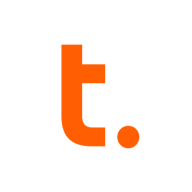

Teradata and Axway AMPLIFY Application Integration are competitive products in the data management and integration category. Axway AMPLIFY holds an edge in feature comprehensiveness, while Teradata's pricing and support make it a cost-effective choice.
Features: Teradata provides high-performance analytics, scalability, and robust data warehousing, making it suitable for large-scale data tasks. It features parallel processing, enabling efficient data loading and querying. Axway AMPLIFY excels in cloud integration, API management, and real-time data processing, meeting needs for seamless system connectivity and integration.
Room for Improvement: Teradata could improve its user interface and simplify the setup process for non-experts. Enhancements in data visualization tools and more affordable hardware requirements could also be beneficial. Axway AMPLIFY could work on reducing setup complexity, offering better cost transparency, and extending offline analytic capabilities to enhance versatility.
Ease of Deployment and Customer Service: Teradata's deployment benefits from a structured approach ideal for large enterprises and responsive support helps in efficient troubleshooting. Axway AMPLIFY, with its agile deployment process, offers flexibility through a cloud-native architecture and is backed by strong customer service that ensures user satisfaction.
Pricing and ROI: Teradata offers reasonable setup costs and efficient scalability, ensuring a favorable ROI for large data operations. While Axway AMPLIFY might have higher initial costs owing to specialized solutions, it provides substantial returns through integration efficiency and flexibility.


Axway Integrator unites multiple incompatible systems, data formats and protocols to centralize and optimize all transactions with suppliers, customers, and other trading partners. IT organizations can use it to design, execute, and monitor integration processes that include transformation of content; protocol mediation and support for files of any size, message type, or flavor of API; and compliance with industry- and company-specific regulations and requirements.
Teradata is a scalable data analytics platform designed to meet enterprise demands for large-scale data management and processing, focusing on performance, scalability, and security for complex query executions.
As a leading data warehousing solution, Teradata integrates advanced analytics enabling organizations to derive insights from massive datasets. It supports high-volume data workloads with its architecture optimized for analytical queries. Users benefit from its robust scalability, allowing seamless expansion as data grows. Teradata's SQL engine is compatible with a wide range of data types, ensuring flexibility in data analysis. With advanced security measures, it protects sensitive data across various environments, providing peace of mind to users handling critical information.
What are the most important features of Teradata?Teradata is widely used in industries like finance, telecommunications, and healthcare, where data-driven decisions are critical. Companies leverage its robust analytics capabilities to enhance customer experiences, streamline operations, and ensure compliance with regulatory requirements. In these sectors, quick access to data insights can significantly impact competitive advantage.
We monitor all Data Integration reviews to prevent fraudulent reviews and keep review quality high. We do not post reviews by company employees or direct competitors. We validate each review for authenticity via cross-reference with LinkedIn, and personal follow-up with the reviewer when necessary.